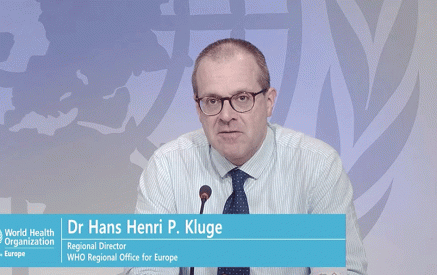Like elsewhere in the world, managers of Armenian companies are also frantically trying to make the right decisions on employment level, asset management, and relationships with their customers and suppliers in what has been the most rapid transformation of business reality in the country’s modern history. With the Government lifting most restrictions on economic activity, the period to “stand by” and to see where the developments are leading to has passed: now it is the time to act, and that time, according to contemporary research, is running out fast. In their article “Should Declining Firms Be Aggressive During the Retrenchment Process?” [Journal of Management, Vol. 46 No. 5, May 2020, pp 694-725], authors Barbero, Martinez and Moreno suggest that in the times of economic downturn, it is not the size of asset contraction and employee layovers that matter most, but the rapidness of measures taken. How have managers in most Armenian companies reacted so far, and what are the key factors that have influenced those decisions?
Let’s look at the most socially significant direction first: employment. Unlike many developed economies, most notably the US, where the unemployment will most likely soar more than six-fold within three months ending in June, and make 25%, Armenian companies seemingly have not been laying-off employees rapidly if we are to trust official estimates: the unemployment is projected to rise by 1.3 percentage points only – from 17.7% pre-pandemic to 19.0% post-pandemic (whatever that might mean time-wise), according to Arman Udumyan, Deputy Minister of Labor and Social Affairs [May 04 media coverage]. Why is the worsening of this metric not nearly as grave as in the developed world? Governments have enacted employee (or paycheck) protection programs in most developed countries, just like the Armenian Government has, and, surely, employees are valued in the developed economies too – so why has the world’s most advance economy not retained a fifth of the workforce, while Armenian economy is projected to lay-off only 1.3% of its workforce?
The answer may lie in peculiarities of managerial practices in Armenian companies: human relationships are believed to prevail over business reasoning, and the latter is not widely supported by instruments and procedures to support efficiency. Potentially, this will lead to significant competitive disadvantages for companies that retain employees in the short-run with no business reasoning. The companies who have efficiency-tracking procedures and indicators in place, will most likely be faster to react, thus they will retain operational and financial health. Regretfully, this will be bad news for many people who will incur substantial loss of income, yet there is evidence that companies who have acted fast have also been able to offer a reasonable “mitigation packages” to those who lost their jobs, permanently or temporarily.
Companies that will “stand by” for much longer may eventually face the stark reality, and then there will be no funds available to treat those who will lose their jobs fairly. Companies who act quick also have a strong chance to come to a social consensus with the now unemployed, since they can back their decisions through efficiency numbers that raise no questions, while companies that lack efficiency KPIs (key performance indicators) will most likely go into a positional argument with those who lose their jobs. This is certainly not the environment where managers are free to reposition their businesses for the new economic reality and target growth again. Importantly, by retaining workforce, and especially the young and the flexible, while merely putting off the time of their inevitable departure from the company, deprives them of the chance to start gaining new skills and look for new opportunities that the economy is creating now – such as the roaring online order processing and delivery industry (unofficial estimates suggest that the share of online ordering and the related deliveries in the total retail sales of food products, restaurant meals and, with the surge in working from home and studying online, computer equipment doubled in April 2020 compared to the same month in 2019).
Read also
American University of Armenia Conducts an Independent Survey
In an attempt to shed more light on how pandemic has impacted employment and household income, the Center for Business Research and Development (CBRD) at American University of Armenia conducted a representative survey of over 1,000 individuals in Yerevan and in the Marzes on May 21. The revelation was strikingly different from what the official estimates suggest: over 20% the respondents indicated that they themselves or someone in their household lost their jobs between March 01 and May 01, while 40% of respondents witnessed a reduction in income. Combined, these two phenomena will be a substantial blow to Armenia’s economy: reduced consumer spending have allegedly been the immediate effect, to be followed by defaulting on consumer loans (after the loan repayment “holidays” are over in June-July), and potentially spiraling into heavy structural unemployment if there are major shifts within the country’s economy (for example, with reduction of the HoReCa share in the economy for a prolonged period of time).
Larger companies have been more hesitant to lay-off people
The aforementioned 20% is in addition to the 17.7% official unemployment rate, and, even if part of it may be temporary, the figure is significant enough to imply that many Armenian businesses are undergoing rapid restructuring. Especially the small and agile ones: the CBRD survey revealed that around 15% of those who indicated a loss of job made their living in small enterprises employing up to 50 people, while only around 8% of those who lost their jobs between March 01 and May 01 were employed at larger companies with a staff of over 250. According to the survey, job loss has been severe in micro-enterprises employing less than 10 people (60% of those who lost their jobs after economic lockdown was imposed), but this is not due to agile retrenchment of course: those micro-enterprises are on a survival mode at best, if still operating at all.
Almost certainly, smaller job cuts at larger companies are not because the latter are more resilient to crisis: we may very well be observing a phenomenon of inertia which prohibits larger companies to be fast in making the difficult decisions that they will have to make all the same. Therefore, as suggested earlier in this article, those companies are likely to lose competitive edge in near future, while the employees soon to be looking for a job are being deprived of their chances to adapt quicker to the new reality.
Managing Assets and Relationships Across the Supply Chain
When it comes to managing their asset pools, most Armenian companies are positioned better than their counterparts in the developed countries, since most capital assets appear to be funded by equity on the balance sheets (provided we count long-term subordinated debt from shareholders as equity – Armenia’s favorite instrument for dodging taxation on dividend payouts). With no third parties involved (banks and leasing companies), they can act flexibly when it comes to liquidation of redundant assets such as warehouses and manufacturing equipment, and most companies will: expect a drop in commercial property prices. Capital expenditures will freeze almost completely, given most businesses will reconsider their strategies for asset renewal and/or expansion. Again, time is critical when making decisions on fixed asset contraction – those with sophisticated market-watching skills will be able to sell-off better when it comes to balancing the new reality with asset requirements. Firms that will “stand by” to see what the new established equilibrium is may suffer in a more rapid sell-off environment, not least by making hasty decisions that will not balance well with the new reality – they risk of being trapped in an unfavorable re-purchase phase when the economy starts picking up again.
For current assets, most companies will try to enact more rigid procedures on controlling accounts receivable. C&F, a major wholesaler, is reportedly contacting their smaller customers to establish a shorter payment cycle – a process where many retailers will suffer shortages of funding to continue business as usual. Eventually though, the wholesale giant will need to tame its moves not to be on the wrong foot with its smaller customers – more than a third of their business. Supermarkets, accounting for nearly 60% of retail in Yerevan according to MegaFood, another major wholesaler, will continue to enjoy favorable payment terms. The latter, by the way, have been active to ramp-up online sales and delivery services, showing remarkable agility to adapt to the new reality – a capability that most smaller retailers can’t attain in the relative short period decisive for sustaining livelihood (C&F, therefore, demonstrates good market watching skills when reducing financial exposure to unsettled debt owed by smaller retailers).
We surely will be witnessing major shifts in how businesses operate in Armenia, and, like everywhere else, those who are quick and entrepreneurial, will be better positioned for the new realities. The developing country’s economy is on a much steeper learning curve now.
Karen Sarkavagyan,
College of Business and Economics, American University of Armenia
June 02, 2020
























































